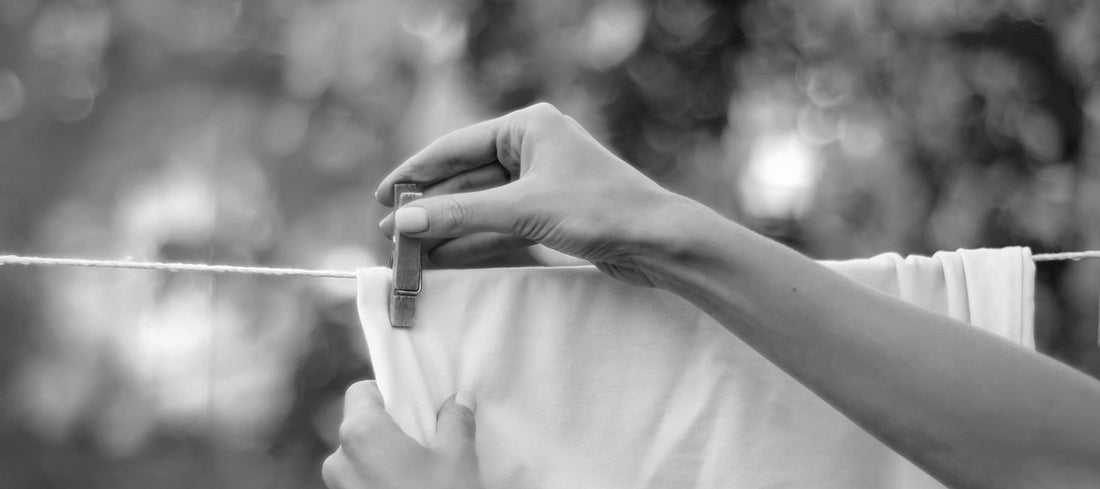Korrekt behandling vil sikre, at dit bæreredskab har en lang levetid. Hvordan du bedst behandler din vikle eller slynge, afhænger af de fibre, som den er vævet af. Når dit bæreredskab indeholder mere end en slags fiber, (for eksempel en blanding af bomuld og uld), skal du altid behandle det efter den mest sarte fiber.
LOOMSTATE VASK
BOMULD
VASK
Bomuld er en meget robust fiber, der er let at vedligeholde og som kan vaskes i maskine. Det tåler op til 60 grader celcius. Vaskemidler med enzymer anbefales, da dette gør det muligt at vaske stoffet helt rent ved lavere temperaturer. 30 grader er ofte nok. Vask ved lavere temperaturer minimerer slid på dit bæreredskab.
TØRRING
Vi anbefaler ikke tørretumbling af din bomuldsvikle, da der herved er risiko for at den krymper. Du risikerer dog ikke at ødelægge viklen hvis du beslutter dig for at gøre det. Ved tørretumbling anbefaler vi kold luft.
STRYGNING
Bomuld kan stryges på mellem-høj varme. Brug damp.
HØR
VASK
Ligesom bomuld er hør en easy care fiber, hvilket betyder at den kan vaskes i maskine med vaskemidler med enzymer. Vi anbefaler, at du ikke vasker dit bæreredskab i hør på mere end 30 grader for at holde hørstoffets naturlige glans intakt.
TØRRING
Hør bør ikke tørretumbles, hvis du ønsker at holde glansen intakt. Lad det i stedet lufttørre, og udglat stoffet med hånden. Giv det derefter en god strygning (mellem-høj varme), når det stadig er let fugtigt.
STRYGNING
Det anbefales at stryge vikler og slynger med hør, da hør har tendens til at folde på samme sted, hvilket kan få trådene til at glide fra hinanden og med tiden skabe svagheder i stoffet. Denne tendens afhjælpes ved lejlighedsvis at vaske og stryge dit bæreredskab.
ULD
Uld, som merino, en vidunderlig og robust fiber, men kan filte, hvis den behandles forkert. Filtning er, når overfladen af uldfibrene rejser sig op, trækker sig sammen, og griber ind i hinanden, ligesom velcro. En filtet vikle/slynge krymper meget, når fibrene trækker sig sammen, og stoffet bliver knirkende og mindre fleksibelt. Et filtet bæreredskab bør ikke bruges til at bære med. Filtning af uld er forårsaget af en kombination af tre faktorer: fugt, hurtige temperaturændringer og omrøring.
For at undgå denne kombination fraråder vi at maskinevaske bæreredskaber, der indeholder uld.
VASK
TØRRING
STRYGNING
SILKE
VASK
TØRRING
Når du tørrer et bæreredskab med silke, skal du følge retningslinjerne for tørring af uld og tilføje, at silke altid skal tørre i skygge og aldrig i direkte sollys.
STRYGNING
Silke kan stryges på laveste temperatur. Brug damp.










